| Moving on from El Paso, we first went north east towards Carlsbad
instead of heading straight down the interstate towards San Antonio. The
land quickly became quite barren and rose steadily with the Guadalupe
mountains in the distance. The desert landscape is very barren. | 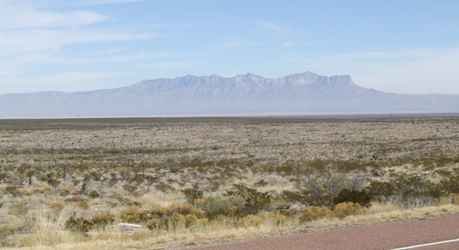 |
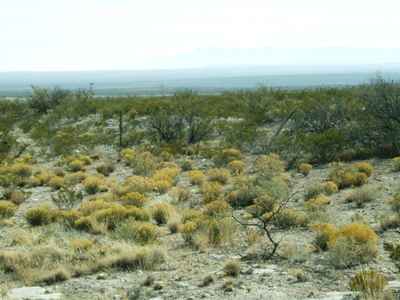 | Mostly it is
scrub varying in density. At times you can see why the cowboys wore
leather chaps. The scrub would be impassable. Further on the scrub becomes
lower and thinner as you climb higher and the available water becomes less. |
| Eventually we came across salt flats with no water, no
vegetation, no nothing! Just before this we found a sign advertising 10 acre
blocks at $200 an acre. Sounds good but I'd want to know how much a well
would cost, if indeed there is any chance of finding any water, which looks dubious given this
landscape. | 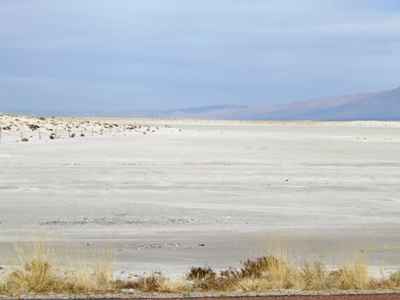 |
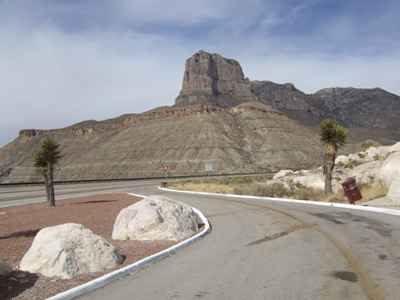 | Eventually we
reached the edges of the Guadalupe National Park. This is El Capitan. Just
behind this rock is Guadalupe Mountain, at around 8500ft, the highest mountain in
Texas, although it looks lower from this viewpoint. |
| This is a close up of the rock. It forms quite an impressive
sentinel facing west towards El Paso almost 100 miles away.. | 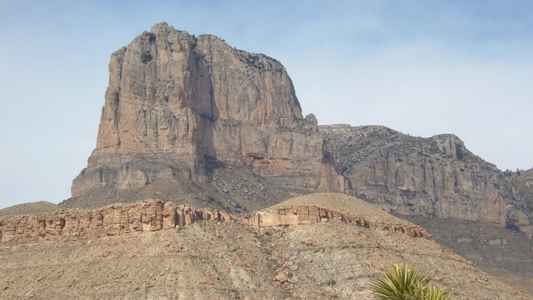 |
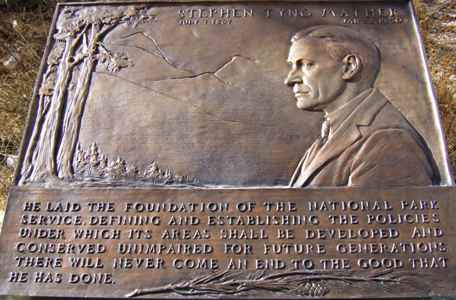 | It is quite a
small park but does have this small memorial to Stephen Mather who laid the
foundation of the National Park System in the 1930s. |
| Surrounding the visitor centre are a number of trees each with a
nametag. This is a mountain mahogany. The presence of trees makes the visitor
centre into an oasis in the middle of the desert. | 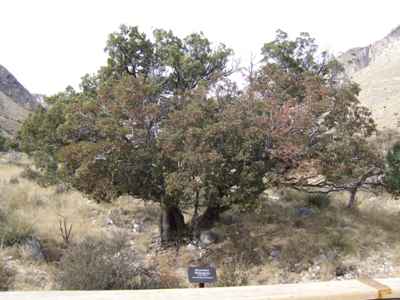 |
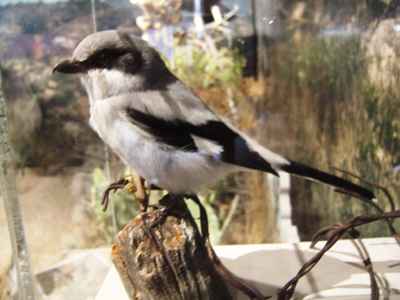 | There is a
very good exhibition inside the centre with a number of stuffed animals and
birds. This is a loggerhead shrike. It hunts from prominent perches and then
impales its prey on thorns, spines or barbed wire. |
| This tiny burrowing owl occupies the abandoned holes of prairie
dogs, ground squirrels and rodents. They will often occupy the same tunnels
for several years if not disturbed. | 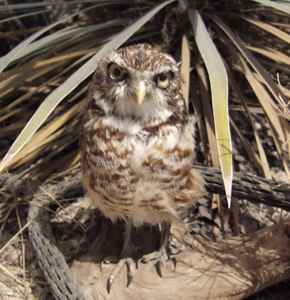 |
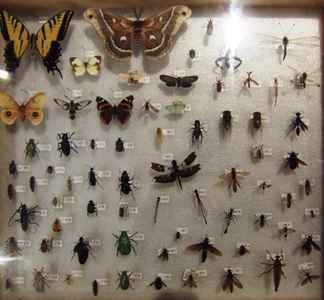 | There is also a
case of bugs and butterflies. The desert is often thought of as being empty
but this shows that there are dozens of creatures living there. |
| Top of the food chain is the mountain lion or cougar. It may look
like an overgrown tabby but this is a serious predator of the first order.
They used to be common but are now very rare as a result of pressure on
their environment. | 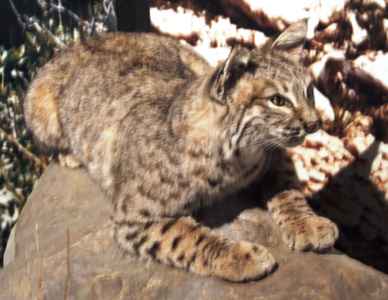 |
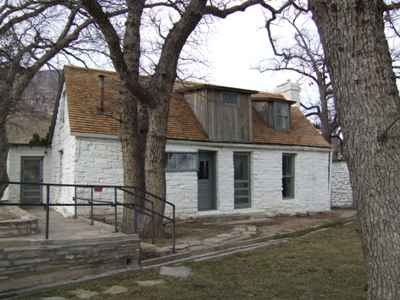 | Just down the
road but still in the park is this ranch house. Built by the Rader brothers
in the 1870s, it was taken over and extended by the Smith family in 1906.
These families were able to live here because of a natural spring which is
still bubbling away, producing 6 gallons per minute. Known as the Frijole ranch it was bought by a judge in 1940s. It is the
oldest substantial example of ranch architecture left in the area. |
| This shed served as a bunkhouse, schoolhouse, and dancehall
throughout the early part of the century and was the centre of the community
for miles around. | 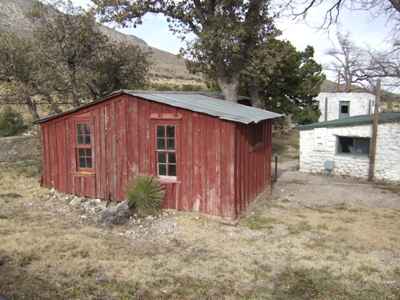 |
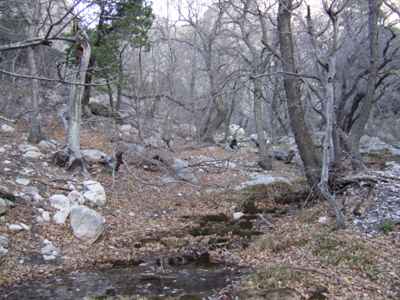 | There are
several footpaths around the ranch area, particularly out to two more springs
which made ranching possible. This is Smith's spring. This
presence of water from the underlying limestone allows the growth of the
trees around the spring, which is also sheltered by the mountain behind it. |
| Looking out from the spring reminds us that this is just an oasis
in an area which has more in common with a moonscape. It is hard to
visualize that this was once a huge inland sea and is now over 4500ft above
sea level. | 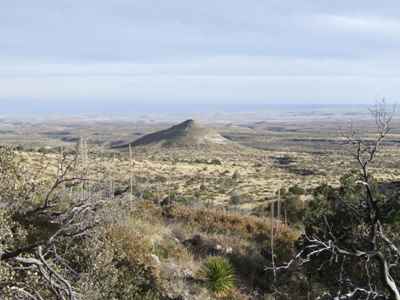 |
|